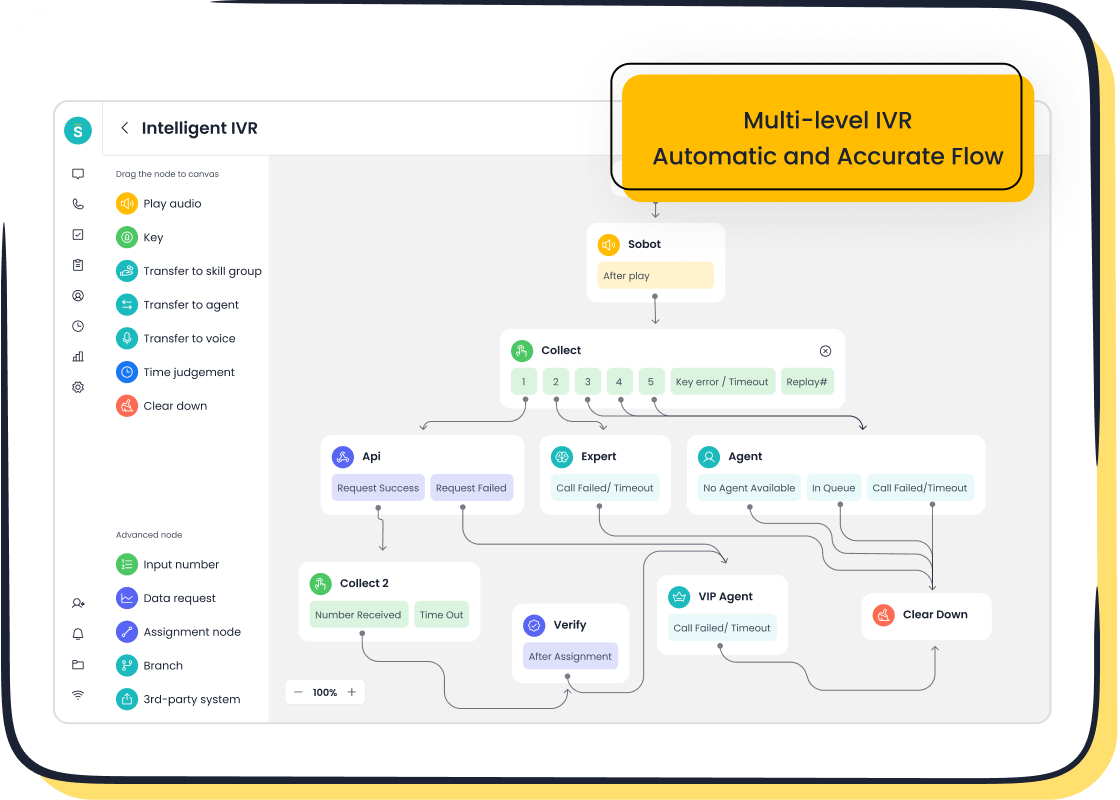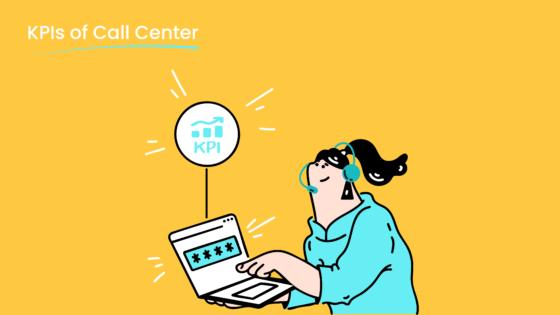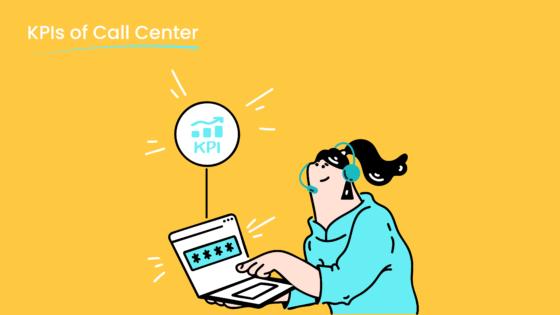10 Proven Strategies to Handle Difficult Customers with Scripts

Dealing with difficult customers can feel overwhelming, but it’s a skill that can transform your business. Customers often reach out when they’re frustrated, and how you respond can either escalate or resolve the situation. This is where a customer care script becomes invaluable. It helps you maintain professionalism and steer the conversation toward a solution.

Effective communication strategies, like staying calm and showing empathy, make a big difference. With tools like Sobot’s Voice/Call Center, you can streamline interactions and provide seamless support. Sobot’s intelligent features, such as smart call routing and AI-powered voicebots, ensure you’re always prepared to handle even the toughest calls with confidence.
Did you know? Research shows that 89% of consumers are more likely to make another purchase after a positive customer service experience. Handling challenges the right way pays off!
Stay Calm and Composed During Interactions
The Role of Emotional Control in Customer Service
When dealing with angry customers, staying calm isn’t just a nice-to-have—it’s essential. Your ability to maintain a calm presence can completely shift the tone of the conversation. Customers often mirror your emotions. If you stay composed, they’re more likely to de-escalate their frustration. This approach not only helps you but also ensures the customer feels heard and respected.
Why does emotional control matter so much in customer service? For starters, it improves communication. When you’re calm, you can express yourself clearly and focus on resolving the issue. Patience also plays a big role. It prevents tensions from escalating and shows customers that their concerns are valid. Empathy is another key factor. By understanding their frustrations, you can build trust and work toward a solution.
Research backs this up. Companies with high emotional intelligence report better customer experiences and increased loyalty. Customers are more likely to advocate for brands that prioritize emotional control. These benefits highlight why staying composed is a cornerstone of handling difficult customers effectively.
Customer Care Script for Staying Calm Under Pressure
Having a customer care script can be a lifesaver when emotions run high. Here’s an example you can use to navigate challenging situations:
Customer: “I’ve been waiting for hours, and no one has resolved my issue!”
You: “I understand how frustrating this must be for you. Let me assure you, I’m here to help. Could you please share a bit more about the issue so I can assist you right away?”
This script does three things:
- Acknowledges the frustration: You validate the customer’s feelings without taking the blame.
- Reassures them: You let them know you’re committed to resolving their issue.
- Redirects the focus: You steer the conversation toward finding a solution.

Using positive language like “I’m here to help” can make a huge difference. It shows you’re on their side, which helps diffuse tension. Tools like Sobot’s Voice/Call Center can further support you by providing real-time call monitoring and smart routing. These features ensure you’re equipped to handle even the toughest calls with confidence.
Show Empathy and Build Trust

Why Empathy is Essential for Handling Difficult Customers
When dealing with angry customers, showing empathy can turn a tense situation into an opportunity to build trust. Empathy allows you to connect with customers on a human level, making them feel valued and understood. This emotional connection often leads to better outcomes and long-term loyalty.
Why does empathy matter so much? For one, customers want to feel acknowledged. If their frustrations are met with indifference, it only adds fuel to the fire. On the other hand, when you acknowledge their feelings, you establish trust and create a foundation for resolution. Studies show that loyal customers, who often feel emotionally connected to a brand, contribute to 65% of a company’s revenue. That’s a powerful reason to prioritize empathy in every interaction.
Empathy also improves satisfaction. Customers who feel listened to and valued are more likely to leave positive feedback and return for future purchases. Genuine interactions, where you take the time to understand their concerns, foster these emotional connections. It’s no surprise that empathy is considered a best practice for handling difficult customers effectively.
Script Example for Acknowledging Customer Concerns
Here’s a simple customer care script to help you show empathy and build trust during challenging conversations:
Customer: “I’ve been trying to get this issue resolved for days, and I’m so frustrated!”
You: “I’m really sorry to hear about your experience. I can understand how frustrating this must be for you. Let’s work together to get this sorted out as quickly as possible.”
This script works because it:
- Acknowledges the customer’s feelings: You validate their frustration without being defensive.
- Shows you’re on their side: Phrases like “Let’s work together” emphasize collaboration.
- Focuses on resolution: You shift the conversation toward solving the problem.
Using tools like Sobot’s Voice/Call Center can make this process even smoother. Features like call tracking and AI-powered voicebots help you stay organized and responsive, ensuring every customer feels heard. By combining empathy with the right tools, you can turn even the most difficult interactions into positive experiences.
Use Active Listening to Understand the Customer
How Active Listening Enhances Trust and Resolution
When dealing with angry customers, practicing active listening can be a game-changer. It’s not just about hearing words; it’s about understanding the emotions and concerns behind them. When you truly listen, customers feel valued, which builds trust and sets the stage for resolution.
Active listening has a ripple effect on customer satisfaction. Studies show that 60% of business problems stem from poor communication. By focusing on what the customer is saying, you can avoid misunderstandings and address their concerns effectively. This approach doesn’t just resolve issues—it strengthens relationships. Customers who feel heard are more likely to trust your brand and remain loyal.
Here’s why it works:
- Listening helps you build rapport, making customers feel comfortable sharing their concerns.
- It shows you care, which fosters trust and encourages positive interactions.
- Customers who feel acknowledged often leave more satisfied, boosting metrics like CSAT and NPS.
For example, financial advisors who practice active listening often deepen client relationships by understanding their motivations and anxieties. This tailored approach leads to long-term loyalty. Similarly, in customer service, listening attentively can turn a frustrated caller into a loyal advocate. Tools like Sobot’s Voice/Call Center make this easier by offering features like call tracking and real-time monitoring, ensuring you never miss critical details during a conversation.
Script Example for Paraphrasing and Clarifying Issues
A customer care script can help you practice active listening and ensure clarity. Here’s an example:
Customer: “I’ve explained this issue three times already, and nothing has been done!”
You: “I hear your frustration, and I want to make sure I fully understand. You mentioned explaining the issue multiple times. Could you confirm if it’s about [specific issue]? This will help me resolve it quickly.”
This script achieves three things:
- Acknowledges the frustration: It shows you’re listening and empathizing.
- Paraphrases the issue: Repeating the concern ensures you’re on the same page.
- Clarifies for resolution: Asking for confirmation avoids further misunderstandings.
Using tools like Sobot’s AI-powered voicebots can enhance this process. These bots can assist in summarizing customer concerns in real time, allowing you to focus on resolving the issue. By combining active listening with the right tools, you can turn even the most difficult customers into satisfied ones.
Set Clear Expectations for Resolution
The Importance of Transparency in Customer Care
When you set clear expectations for resolution, you make life easier for both your team and your customers. Transparency builds trust. It shows customers that you’re committed to solving their issues and keeps them informed about what’s happening. This approach reduces confusion and frustration, turning a potentially negative experience into a positive one.
Think about it—when customers know what to expect, they feel more confident in your service. They’re less likely to call back repeatedly or escalate their complaints. This clarity also helps your team stay aligned, improving efficiency and reducing stress. For example, if you tell a customer their issue will be resolved within 24 hours, they’re less likely to feel ignored.
The benefits of setting clear expectations go beyond just resolving issues. They impact your entire customer service operation. Here’s a quick breakdown:
| Benefit | Impact on Customer Service |
|---|---|
| Increased customer satisfaction | Customers feel more confident and are likely to return. |
| Higher team efficiency | Reduces confusion and allows for quicker issue resolution. |
| Stronger brand reputation | Consistent service leads to positive word-of-mouth. |
| Better employee engagement | Employees feel aligned and motivated to meet expectations. |
| Easier measurement and accountability | Facilitates tracking of KPIs for continuous improvement. |
| Reduced churn and customer complaints | Proactive service reduces complaints and retains customers. |
Sobot’s Voice/Call Center can help you achieve this transparency effortlessly. Features like call tracking and smart call routing ensure every customer gets the right information at the right time. With a 99.99% system uptime, you can confidently deliver on your promises.
Script Example for Outlining Next Steps
Here’s a customer care script to help you set clear expectations:
Customer: “I’ve been waiting for a solution. When will this be fixed?”
You: “Thank you for bringing this to our attention. Based on what you’ve shared, we’ll need about 48 hours to resolve this issue. I’ll personally follow up with you once it’s done. If you have any questions in the meantime, feel free to reach out.”
This script works because it:
- Provides a timeline: Customers know exactly when to expect a resolution.
- Offers reassurance: You show commitment by promising a follow-up.
- Encourages communication: You keep the door open for further questions.
Using tools like Sobot’s AI-powered voicebots can make this process even smoother. These bots can assist in tracking timelines and sending updates, ensuring customers stay informed every step of the way.
Apologize Sincerely to Diffuse Tension
The Power of a Genuine Apology in Building Trust
A sincere apology can work wonders when dealing with difficult customers. It’s not just about saying “sorry.” It’s about showing empathy and taking responsibility for the customer’s experience. When you apologize genuinely, you acknowledge their frustration and demonstrate that their concerns matter. This simple act can diffuse tension and pave the way for resolution.
Why does a heartfelt apology make such a difference? Studies reveal that acknowledging a customer’s anger can turn a negative experience into a positive one. Expressing empathy and using affirmations like “I see” or “I understand” can significantly reduce frustration. Customers feel valued when their emotions are validated, which builds trust and loyalty.
Interestingly, the type of apology also matters. Research shows that verbal apologies are more effective for competence-based issues, while written apologies work better for integrity-based concerns. Either way, a genuine apology reassures customers that you’re committed to improving their experience. It alleviates fears of future problems and strengthens their trust in your service.
Sobot’s Voice/Call Center can support you in delivering these apologies effectively. With features like call tracking and real-time monitoring, you can stay informed about customer concerns and respond with empathy. These tools ensure your team is equipped to handle even the most challenging interactions with professionalism and care.
Script Example for Apologizing Without Admitting Fault
Here’s a script you can use to apologize sincerely while maintaining professionalism:
Customer: “This is unacceptable! I’ve been waiting for hours, and no one has fixed my issue.”
You: “I’m truly sorry for the inconvenience you’ve experienced. I understand how frustrating this must be. Let me take a closer look at the situation and find the best way to resolve it for you.”
This script works because it:
- Acknowledges the frustration: You validate the customer’s feelings without assigning blame.
- Expresses empathy: Phrases like “I understand” show you care about their experience.
- Focuses on resolution: You shift the conversation toward solving the problem.
Using tools like Sobot’s AI-powered voicebots can enhance this process. These bots can assist in summarizing customer concerns, allowing you to focus on delivering a genuine apology and finding a solution. By combining empathy with the right tools, you can turn even the most difficult customers into loyal advocates.
Offer Solutions and Alternatives to Address Concerns

How to Shift the Focus to Resolution
When dealing with difficult customers, shifting the focus to resolution can transform the entire interaction. Customers often feel stuck in their frustration, but offering solutions helps them see a path forward. This approach not only addresses their concerns but also shows your commitment to improving their experience.
Proactivity plays a big role here. When you present solutions, you demonstrate that you’re actively working to resolve the issue. This reassures customers and builds trust. For example, if a customer complains about delayed delivery, offering expedited shipping or a discount on their next purchase can turn their dissatisfaction into appreciation.
The impact of timely solutions is backed by data. Studies show that resolving complaints effectively can turn dissatisfied customers into loyal advocates. Exceptional service during resolution leaves a lasting impression, enhancing customer loyalty. Offering alternatives also personalizes the interaction, making customers feel valued and understood.

Sobot’s Voice/Call Center can help you implement this strategy seamlessly. With features like smart call routing and AI-powered voicebots, you can quickly identify customer concerns and provide tailored solutions. These tools ensure every customer receives the attention they deserve, turning challenges into opportunities for stronger relationships.
Script Example for Presenting Options to the Customer
Here’s a simple script to guide you when offering solutions:
Customer: “I’m really upset about this issue. It’s been such a hassle!”
You: “I completely understand how frustrating this has been for you. Here’s what I can do to help: We can [Option 1] or [Option 2]. Which option works best for you?”
This script works because it:
- Acknowledges the frustration: You validate the customer’s feelings.
- Offers clear choices: Presenting options empowers the customer to decide.
- Focuses on resolution: You shift the conversation toward solving the problem.
For example, if a customer is unhappy with a product, you might offer a replacement or a refund. This flexibility shows you care about their satisfaction. Tools like Sobot’s call tracking feature can help you keep track of these resolutions, ensuring every customer interaction ends on a positive note.
Know When to Escalate the Issue to Supervisors
Recognizing When Escalation is Necessary
Sometimes, no matter how skilled you are at handling difficult customers, certain situations require a supervisor’s intervention. Knowing when to escalate an issue is crucial for maintaining professionalism and ensuring a resolution that satisfies the customer. But how do you recognize when it’s time to involve a higher authority?
Here are some clear signs that escalation is necessary:
- The customer requests to speak with a supervisor directly.
- The issue involves a policy or decision that only a manager can override.
- The customer remains dissatisfied despite your best efforts to resolve the problem.
- The situation becomes emotionally charged, and a fresh perspective is needed to de-escalate.
- The problem requires access to information or authority beyond your role.
Documenting these situations is equally important. Keep detailed records of the customer’s concerns, your attempts to resolve the issue, and why escalation was required. This ensures transparency and helps the supervisor address the problem effectively. Tools like Sobot’s Voice/Call Center simplify this process with features like call tracking and real-time monitoring. These capabilities allow you to provide supervisors with all the context they need to step in seamlessly.
Script Example for Transitioning to a Supervisor Using Sobot's Voice/Call Center
When escalating an issue, how you communicate the transition can make or break the customer’s experience. A smooth handoff shows professionalism and reassures the customer that their concerns are being taken seriously. Here’s a script to guide you:
Customer: “I’ve explained this multiple times, and nothing has been done. I want to speak to someone in charge!”
You: “I completely understand your frustration, and I want to ensure we resolve this for you. I’ll connect you with my supervisor, who has the authority to address this issue fully. Please hold for a moment while I transfer your call.”
This script works because it:
- Validates the customer’s feelings by acknowledging their frustration.
- Reassures them that their concerns are being prioritized.
- Provides a clear explanation of the next steps, reducing uncertainty.
Sobot’s Voice/Call Center makes this process even smoother. With features like smart call routing and real-time call monitoring, you can transfer calls efficiently while ensuring the supervisor has all the necessary details. This seamless interaction not only improves customer satisfaction but also enhances your team’s overall service quality.
Use Positive Language to De-escalate Tension
The Impact of Positive Framing in Communication
When dealing with difficult customers, the words you choose can make or break the interaction. Positive language has the power to calm emotions and steer conversations toward resolution. Instead of focusing on what can’t be done, positive framing highlights what can be achieved. This subtle shift in communication fosters cooperation and reduces tension.
Research shows that positive framing significantly impacts customer communication. For example, messages framed with pride evoke stronger engagement and trust. Customers feel more valued and are more likely to respond positively when the tone is uplifting. This approach also taps into emotions like pride and satisfaction, which can transform a negative experience into a memorable one.
Using positive language doesn’t just help customers feel better—it also improves your service. Phrases like “Let’s resolve this together” or “I’m here to help” show empathy and build trust. Maintaining a soft tone and avoiding provocative words can further de-escalate tense situations. These small adjustments create a more productive interaction and pave the way for a smoother resolution.
Sobot’s Voice/Call Center can support this approach with tools like AI-powered voicebots and real-time call monitoring. These features help you stay composed and focused, ensuring every customer feels heard and valued. By combining positive language with advanced solutions, you can turn even the most challenging conversations into opportunities for stronger relationships.
Script Example for Reframing Negative Statements
Here’s how you can reframe a negative statement into a positive one during a customer interaction:
Customer: “Why is this taking so long? I’ve been waiting forever!”
You: “I understand the wait has been frustrating. The good news is, I’m already working on this and will have an update for you shortly.”
This script works because it:
- Acknowledges the frustration: You validate the customer’s feelings without being defensive.
- Focuses on progress: Highlighting what’s being done shifts the focus to resolution.
- Uses positive framing: Words like “good news” create a more optimistic tone.

With tools like Sobot’s smart call routing and call tracking, you can ensure every customer gets timely updates. These features make it easier to provide clear, positive communication, even in high-pressure situations. By reframing negative statements, you can keep the conversation constructive and focused on solutions.
Follow Up to Ensure Customer Satisfaction
Why Following Up is Crucial for Retention
Following up with customers after an interaction isn’t just polite—it’s a game-changer for building loyalty. When you check back, you show that their experience matters to you. This small gesture can make a big difference in how they perceive your service. It’s not just about solving their problem; it’s about making them feel valued.
Here’s why following up is so important:
- It strengthens relationships. Customers are more likely to stick around when they feel cared for.
- It opens doors for feedback. Asking for their input shows you’re committed to improving.
- It creates upselling opportunities. Engaged customers are more likely to explore additional solutions you offer.
Customer feedback is one of the most valuable tools you have to increase customer retention.
Imagine this: A customer had a tough time resolving an issue. You follow up a few days later to ensure everything’s working smoothly. That simple act can turn a frustrated customer into a loyal advocate. Tools like Sobot’s Voice/Call Center make this process seamless. With features like call tracking and automated reminders, you can stay on top of follow-ups without missing a beat.
Script Example for Checking Back with the Customer
Here’s a script you can use to follow up effectively:
You: “Hi [Customer’s Name], this is [Your Name] from [Your Company]. I just wanted to check in and see how things are going with [specific issue or product]. Has everything been resolved to your satisfaction?”
If the customer responds positively:
You: “That’s great to hear! If there’s anything else you need, don’t hesitate to reach out. We’re always here to help.”
If the customer still has concerns:
You: “I’m sorry to hear that. Let me take another look and ensure we get this resolved for you right away.”
This script works because it:
- Shows you care by initiating the follow-up.
- Keeps the tone friendly and open.
- Focuses on ensuring the customer’s satisfaction.
Using Sobot’s Voice/Call Center, you can automate follow-up reminders and track customer responses. This ensures no one slips through the cracks, helping you maintain high levels of satisfaction and retention.
Learn from Each Interaction to Improve
Turning Difficult Interactions into Learning Opportunities
Every interaction with a customer, even the challenging ones, is a chance to grow. Difficult customers often highlight gaps in your service or processes that you might not notice otherwise. By reflecting on these moments, you can uncover valuable insights to improve your strategies and deliver better experiences.
For example, analyzing customer feedback can reveal patterns. Maybe customers frequently mention delays in response times or confusion about policies. These insights allow you to address root causes and prevent similar issues in the future. Real-time analytics, like those offered by Sobot’s Voice/Call Center, make this process seamless. You can track metrics like call duration, resolution rates, and customer sentiment to identify areas for improvement.
Here’s how learning from interactions can transform your service:
- Real-time analytics enhance customer service metrics.
- Customer feedback is vital for improving interaction strategies.
- Personalized interactions lead to better customer satisfaction.
The impact of this approach is clear. Businesses that actively learn from customer interactions see measurable improvements:
| Metric | Improvement |
|---|---|
| First-Call Resolution (FCR) | 42% increase |
| Customer-rated Quality of Service (QoS) | 20% improvement |
By turning every interaction into a learning opportunity, you not only resolve issues but also build a stronger foundation for future success.
Script Example for Closing the Conversation on a Positive Note
Ending a conversation on a positive note leaves a lasting impression. It reassures the customer that their concerns were taken seriously and that you value their time. Here’s a simple script to guide you:
You: “Thank you for bringing this to our attention, [Customer’s Name]. I’m glad we could work together to resolve this. If you have any other questions or need further assistance, don’t hesitate to reach out. We’re always here to help!”
This script works because it:
- Shows gratitude for the customer’s patience and input.
- Reinforces the resolution by summarizing the outcome.
- Keeps the door open for future communication.

Using tools like Sobot’s Voice/Call Center can make this process even smoother. Features like call tracking and automated follow-ups ensure you never miss an opportunity to leave a positive impression. By closing conversations thoughtfully, you turn even difficult interactions into moments of connection and trust.
Handling difficult customers doesn’t have to be overwhelming. The 10 strategies we’ve explored—like staying calm, showing empathy, and using active listening—equip you to turn challenging interactions into opportunities for trust and loyalty. Scripts help you stay professional and focused, ensuring every conversation moves toward resolution.
Sobot’s Voice/Call Center makes implementing these strategies seamless. With features like smart call routing and AI-powered voicebots, you can deliver personalized support that builds customer satisfaction. Businesses using tools like these often see improved retention rates and higher Net Promoter Scores (NPS). Ready to transform your customer service? Learn more about Sobot’s solutions here.
FAQ
What is the best way to stay calm when dealing with difficult customers?
Staying calm starts with taking a deep breath and focusing on the issue, not the emotion. Use tools like Sobot’s Voice/Call Center to streamline communication. Features like real-time monitoring help you stay organized and confident, even during high-pressure calls.
How can I show empathy without overpromising?
Acknowledge the customer’s feelings and focus on what you can do. For example, say, “I understand how frustrating this must be. Let’s work together to resolve it.” Sobot’s AI-powered voicebots can assist by summarizing concerns, helping you respond empathetically without making unrealistic promises.
When should I escalate an issue to a supervisor?
Escalate when the customer requests it, the issue involves policy exceptions, or your efforts haven’t resolved the problem. Sobot’s smart call routing ensures smooth transitions, so supervisors have all the context they need to step in effectively.
How does Sobot’s Voice/Call Center improve customer interactions?
Sobot’s Voice/Call Center offers features like smart call routing, AI-powered voicebots, and real-time monitoring. These tools help you manage calls efficiently, reduce response times, and provide personalized support, ensuring every customer feels valued and heard.
Why is following up with customers so important?
Following up shows you care about their experience and ensures their issue is fully resolved. It also opens the door for feedback and builds loyalty. Sobot’s automated follow-up reminders make it easy to stay connected with customers without missing a beat.
See Also
Enhance Customer Satisfaction With These 10 Live Chat Tips
Effective Strategies for Quality Management in Call Centers
Selecting Social Media Customer Service Software: 10 Helpful Tips
Implementing Omnichannel Solutions: 10 Essential Steps to Follow
